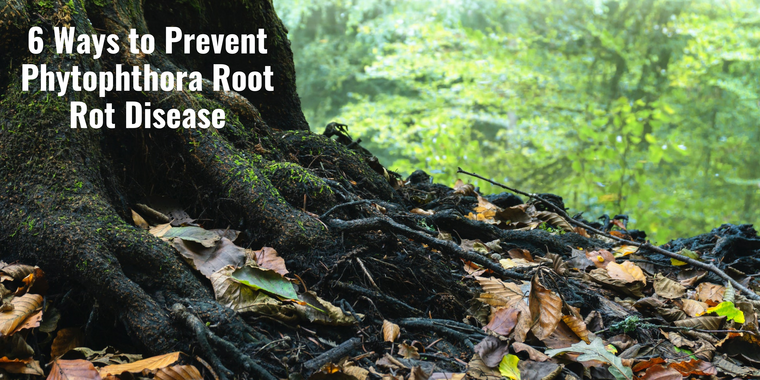
What Is Phytophthora Root Rot Disease? Phytophthora root rot, also known as Phytophthora Cinnamomi, is a common disease of trees and shrubs that causes defoliation and eventual death if left untreated.
The disease was first reported in Florida in the late 1800s and has since spread to every state in the United States, as well as most other countries worldwide.
If you live in an area where Phytophthora root rot has been reported, there are ways you can protect your plants and prevent the disease from taking hold.
Get Quotes from Tree and Plant Care Experts Today
1) Avoid Contaminated Soil
One of the most common reasons for plant-disease problems is not actually a problem with your plants, but rather an issue with your soil.
You might think you're doing a good job of keeping your plants healthy when in reality you're introducing something into their soil that is causing them harm.
To avoid that issue, make sure that any additions to your garden's soil are clean and free from contaminants. The only way to do that is by purchasing sterile potting soil or sterilizing it yourself by baking it in an oven at 250 degrees Fahrenheit for two hours and letting it cool completely before using it.
If you've already planted and started experiencing symptoms of Phytophthora root rot disease, remove affected plants immediately and replace them with healthy ones.
2) Plant at Correct Plant Spacing
One way you can help prevent Phytophthora root rot disease is by keeping your soil properly fertilized. Fertilizers may contain nutrients in low quantities, but they often give plants just what they need in specific amounts.
When overused, however, fertilizers can change soil pH levels and make it more difficult for plants to absorb certain minerals.
While it’s always a good idea to get fertilizer analysis done before using any products on your plants or lawns, remember that one of these small mistakes can cause Phytophthora root rot disease and hurt your chances of growing healthy plants.
Fortunately, there are ways you can both avoid making mistakes with fertilizers and know what causes them if they do happen.
3) Proper Use of Fertilizers
In order to keep plants healthy and to prevent the further spread of disease, be sure that you are using your fertilizers properly. Apply them at the right time and in appropriate amounts.
Also, make sure that you don’t mix incompatible fertilizers together. You can find many different types of fertilizers on Amazon! Be careful when applying plant food: Remember to always dilute any plant food for indoor use.
Overfeeding your indoor plants will not only damage their root system but it can also cause leaf burn which ultimately results in stunted growth or even death of leaves.
Other common mistakes include over-watering as well as under-watering your plants; make sure that you water them regularly but gently enough so as not to wash away nutrients from around their roots.
4) Keep Plants Well-Watered
In order to keep your plants healthy, make sure they’re properly watered. Just watering once or twice a week isn’t enough for most plants; in fact, depending on your growing environment, you should be watering as often as daily.
Not only does proper watering help keep plants from drying out and dying prematurely, but it also ensures that nutrients are being brought up from below ground level.
When your plant is provided with plenty of water and soil nutrition, it will have a much better chance of fighting off common diseases such as root rot.
If you suspect that your plant has been infected by phytophthora root rot, contact your local garden center for treatment recommendations or tips on planting new disease-resistant plants.
5) Avoid Overhead Watering
If you’re in a high-humidity climate, it’s particularly important to avoid overhead watering, which can promote disease by creating perfect conditions for spores and rhizoids.
Instead, use drip lines or soaker hoses that water your plants at their roots instead of spraying leaves and stems.
Watering with a sponge on a long handle is also an excellent way to get water directly into your plant’s soil without wetting foliage; simply water in circular motions close to plants until you see water seeping out around their base.
6) Remove Dead and Diseased Plants
Dead and diseased plants should be removed as soon as possible. Diseased plants should be removed so that their roots don’t spread disease to healthy plants.
Pull or dig up dead and dying portions of your garden; don’t cut them off at ground level because you want to get rid of the roots, too.
If a plant has only a few affected leaves, remove those leaves and dispose of them properly.
Prevent spreading Phytophthora root rot by keeping track of which parts of your garden are infected with the disease—in other words, make sure you treat only areas that need it—and by adding new compost and potting soil on top of previous layers instead of directly on top of diseased soil.
1. Register your company
2. Create a searchable listing
3. Connect with more clients
